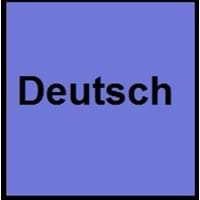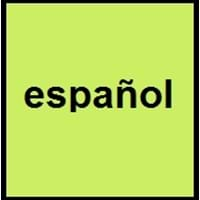Countries
Austria, Belgium, Germany, Italy, Liechtenstein, Luxembourg, Switzerland
Andora, Argentina, Aruba, Australia, Belize, Bolivia, Brazil, Canada, Chile, Colombia, Costa Rica, Cuba, Dominican Republic, Ecuador, El Salvador, Equatorial Guinea, France, Gibraltar, Guatemala, Honduras, Jamaica, Latvia, Luxembourg, Mexico, Morocco, Namibia, Netherlands Antilles, New Zealand, Nicaragua, Norway, Panama, Paraguay, Peru, Philippines, Puerto Rico, Russia, Spain, Sweden, Switzerland, Trinidad and Tobago, Turkey, United Kingdom, United States of America, Uruguay, Venezuela, Western Sahara
National Language
Germany
Spain
Second Language
North Dakota, United States of America
Andora, Aruba, Australia, Austria, Belgium, Belize, Brazil, Bulgaria, Canada, Denmark, France, Germany, Ireland, Israel, Italy, Jamaica, Luxembourg, Morocco, Netherlands, Netherlands Antilles, New Zealand, Philippines, Poland, Portugal, Romania, Russia, Slovenia, Switzerland, Trinidad and Tobago, Turkey, United Kingdom, United States of America, US Virgin Islands
Speaking Continents
Europe
Africa, Asia, Europe, North America, South America
Minority Language
Czech Republic, Denmark, Former Soviet Union, France, Hungary, Italy, Namibia, Poland, Romania, Slovakia, Slovenia
Brazil, France, Germany, Italy, Japan, Morocco, United Kingdom
Regulated By
Council for German Orthography
Asociación de Academias de la Lengua Española
Interesting Facts
- One of the large group of Indo-Germanic languages is German.
- The second most popular Germanic language spoken today behind English is German language.
- One of the world's most phonetic language is Spanish.
- Up to the 18th century, Spanish was diplomatic language.
Similar To
Dutch, Danish, Norwegian, Swedish and English Languages
French Language
Derived From
Albanian Languages
Latin
Alphabets in
German-Alphabets.jpg#200
Spanish-Alphabets.jpg#200
Writing Direction
Left-To-Right, Horizontal
Left-To-Right, Horizontal
How Are You?
Wie geht es dir?
Cómo estás?
Good Night
gute Nacht
Buenas Noches
Good Evening
guten Abend
Bonne soirée
Good Afternoon
guten Tag
Buenas Tardes
Good Morning
guten Morgen
Buenos Días
I Love You
Ich liebe dich
Te Quiero
Excuse Me
Entschuldigung
Discúlpeme
Dialect 1
Swiss German
Mexican Spanish
Where They Speak
Switzerland
Mexico
Dialect 2
Swabian German
Cuban Spanish
Where They Speak
Germany
Cuba
Dialect 3
Texas German
Puerto Rican Spanish
Where They Speak
Texas
Puerto Rico
Native Name
Deutsch
Español
Alternative Names
Deutsch, Tedesco
Castellano, Castilian, Español
French Name
allemand
espagnol; castillan
German Name
Deutsch
Spanisch
Pronunciation
[ˈdɔʏtʃ]
[espaˈɲol], [kasteˈʎano]
Ethnicity
Germans
Not Available
Origin
6th Century AD
210 BC
Language Family
Indo-European Family
Indo-European Family
Subgroup
Germanic
Romance
Branch
Western
Not Available
Early Forms
No early forms
Old Spanish and Spanish
Standard Forms
German Standard German, Swiss Standard German and Austrian Standard German
Pluricentric Standard Spanish
Signed Forms
Signed German
Signed Spanish
Scope
Individual
Individual
ISO 639 6
deus
Not Available
Glottocode
high1287, uppe1397
stan1288
Linguasphere
52-ACB–dl & -dm
51-AAA-b
Language Type
Living
Living
Language Linguistic Typology
Subject-Object-Verb, Subject-Verb-Object
Subject-Object-Verb
Language Morphological Typology
Fusional, Synthetic
Fusional, Synthetic
German and Spanish Greetings
People around the world use different languages to interact with each other. Even if we cannot communicate fluently in any language, it will always be beneficial to know about some of the common greetings or phrases from that language. This is where German and Spanish greetings helps you to understand basic phrases in German and Spanish language. German word for "Hello" is hallo or Spanish word for "Thank You" is Gracias. Find more of such common German Greetings and Spanish Greetings. These greetings will help you to be more confident when conversing with natives that speak these languages.
German vs Spanish Difficulty
The German vs Spanish difficulty level basically depends on the number of German Alphabets and Spanish Alphabets. Also the number of vowels and consonants in the language plays an important role in deciding the difficulty level of that language. The important points to be considered when we compare German and Spanish are the origin, speaking countries, language family, different greetings, speaking population of these languages. Want to know in German and Spanish, which language is harder to learn? Time required to learn German is 30 weeks while to learn Spanish time required is 24 weeks.





